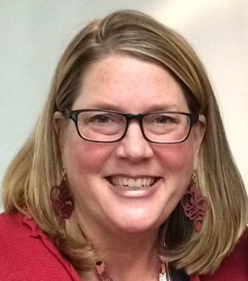12 Tips for Being a Great Board!

Timi Tullis, AASB Associate Executive Director
Recently at the end of an on site Board Workshop the Board Chair asked “What are the things really good boards do to make them function well?” It got me thinking and talking to other colleagues about this topic. Here are some of my thoughts!
Good boards:
- have a clear and defined way to onboard new members. This should NOT be left to the superintendent, nor is it a ‘one and done.’ Rather, it is something done over the course of 9-12 months and allows members to take in information at a nice pace, versus drinking from a hose trying to digest everything in one sitting.
- schedule an annual board self-assessment to discuss how the board is functioning as a team. If an outside facilitator is used, (which we recommend) it is also a great time for some other board development topics to be discussed.
- evaluate their superintendent on a set schedule and tie the evaluation to the strategic goals of the district. We suggest starting the process in December, and having it completed by March if at all possible.
- hold work sessions on an ongoing basis, either monthly or every other month. During work sessions the board is able to focus on a topic more thoroughly, and not have the same rules guiding them as they would at an officially called meeting. Work sessions are a great time to learn as a team together.
- ensure the district has an ACTIVE and UPDATED Strategic Plan with measurable outcomes. The board should then expect updates from the superintendent on the plan, and can use the plan as a base for the superintendent’s evaluation process.
- attend conferences, participate in webinars, read articles and have discussions (at work sessions), or come together to advocate for districts when there is a call to action. Boards learning together are stronger.
- focus on student achievement data. Ask for data, dig into the data and use it to help set goals to move forward as a district.
- listen to the youth voices, establish and encourage a youth to sit on the board in an advisory role and be sure to orient them to their roles and outline expectations.
- develop and work on healthy communication between the superintendent and the board. Assume best intentions and go to the superintendent with issues BEFORE jumping to conclusions.
- do their homework and come to meetings prepared to discuss the work on the board. Go over each of the reports and IF there are questions ask the superintendent in advance of the meeting.
- make sure the policy manual is up to date and become familiar with policies. These are the guidelines that have been established for the district and tell the community and staff the guiding principles that have been set by the board.
- understand the role of the board vs the role of the leadership and administration. The board sets the vision and governs, and the leadership manages and carries out the vision of the board. This covers everything from policy development to curriculum and instructional material. Understand your role.
If your board focuses on these areas and commits to working as a team for the betterment of all students in your district, you too can be considered a ‘great board.’ Never forget to invest in yourselves and your board! AASB is here to help you with any of the above topics. Please reach out to us at any time.
